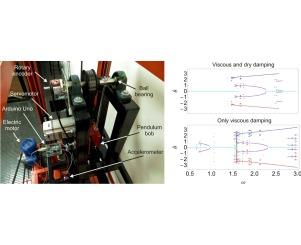Damping in a parametric pendulum with a view on energy harvesting |
| |
| Affiliation: | 1. Grupo de Investigación en Multifísica Aplicada (GIMAP), Universidad Tecnológica Nacional, Facultad Regional Bahía Blanca, Consejo Nacional de Investigaciones Científicas y Técnicas, Argentina;2. Grupo de Investigación en Multifísica Aplicada (GIMAP), Universidad Tecnológica Nacional, Facultad Regional Bahía Blanca, Consejo Nacional de Investigaciones Científicas y Técnicas, Departamento de Ingeniería, Universidad Nacional del Sur, Argentina;1. Dept. of Mechanics of Materials and Constructions,Vrije Universiteit Brussel, Pleinlaan 2, Brussels 1050, Belgium;2. Faculteit Toegepaste Ingenieurswetenschappen, Universiteit Antwerpen, Groenenborgerlaan 171 – 2020 Antwerpen, Belgium;1. Department of Civil, Environmental and Geo-Engineering, University of Minnesota, USA;2. Departement of Architecture, Geology, Environment and Constructions, Structural Engineering Division, University of Liège, Belgium;1. Université Clermont Auvergne, CNRS, SIGMA Clermont (ex- French Institute of Advanced Mechanics - IFMA), Institut Pascal, F-63000 Clermont-Ferrand, France;2. Department of Theoretical and Applied Mechanics, Dniepropetrovsk National University, Gagarin Av., 72, Dniepropetrovsk 49010, Ukraine |
| |
| Abstract: | 
The present article addresses the quantification of damping in a parametric pendulum, with a view on further applications in the design of energy harvesting devices. Detailed new experimental data is obtained for such purpose, and a novel mathematical model is presented. Linear and quadratic viscous damping and also dry friction are taken into account. To introduce the dry friction component, the pendulum axis is mounted on ball bearings. This is considered as a very realistic situation of a harvester. Damping parameters are determined by minimizing the difference between numerical and experimental time histories. It is shown that the damping model here presented is more adequate to replicate experiments than commonly used linear models, which consider only a linear viscous damping term characterized by means of free decay tests. It is also pointed that linear models are not adequate for refined studies, since they can lead to erroneous predictions of rotation zones, and consequently to wrong considerations in the design of pendulum harvesters. |
| |
| Keywords: | Energy harvesting Parametric pendulum Damping Optimization |
| 本文献已被 ScienceDirect 等数据库收录! |
|

